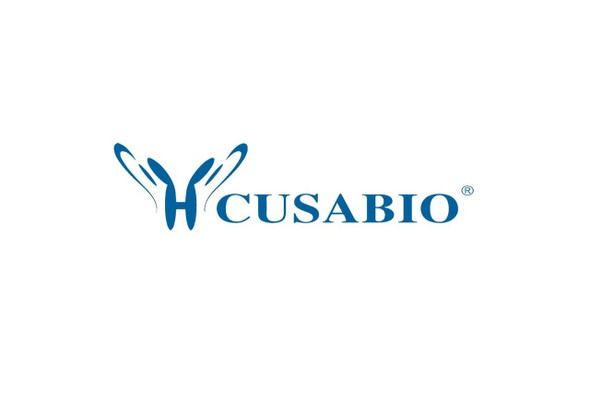Cusabio Human Recombinants
Recombinant Human Protein AATF (AATF), partial | CSB-RP052644h
- SKU:
- CSB-RP052644h
- Availability:
- 13 - 23 Working Days
Description
Recombinant Human Protein AATF (AATF), partial | CSB-RP052644h | Cusabio
Alternative Name(s): Apoptosis-antagonizing transcription factorRb-binding protein Che-1
Gene Names: AATF
Research Areas: Epigenetics and Nuclear Signaling
Organism: Homo sapiens (Human)
AA Sequence: PLALQLEQLLNPRPSEADPEADPEEATAARVIDRFDEGEDGEGDFLVVGSIRKLASASLLDTDKRYCGKTTSRKAWNEDHWEQTLPGSSDEEISDEEGSGDEDSEGLGLEEYDEDDLGAAEEQECGDHRESKKSRSHSAKTPGFSVQSISDFEKFTKGMDDLGSSEEEEDEESGMEEGDDAEDSQGESEEDRAGDRNSEDDGVVMTFSSVKVSEEVEKGRAVKNQIALWDQLLEGRIKLQKALLTTNQLPQPDVFPLFKDKGGPEFSSALKNSHKALKALLRSLVGLQE
Source: E.coli
Tag Info: N-terminal GST-tagged
Expression Region: 6-294aa
Sequence Info: Partial
MW: 58.8 kDa
Purity: Greater than 90% as determined by SDS-PAGE.
Relevance: May function as a general inhibitor of the histone deacetylase HDAC1. Binding to the pocket region of RB1 may displace HDAC1 from RB1/E2F complexes, leading to activation of E2F target genes and cell cycle progression. Conversely, displacent of HDAC1 from SP1 bound to the CDKN1A promoter leads to increased expression of this CDK inhibitor and blocks cell cycle progression. Also antagonizes PAWR mediated induction of aberrant amyloid peptide production in Alzheimer disease (presenile and senile dentia), although the molecular basis for this phenomenon has not been described to date.
Reference: Identification of novel transcription factor-like gene from human intestinal cells.Lindfors K., Halttunen T., Huotari P., Nupponen N., Vihinen M., Visakorpi T., Maki M., Kainulainen H.Biochem. Biophys. Res. Commun. 276:660-666(2000)
Storage: The shelf life is related to many factors, storage state, buffer ingredients, storage temperature and the stability of the protein itself. Generally, the shelf life of liquid form is 6 months at -20?/-80?. The shelf life of lyophilized form is 12 months at -20?/-80?.
Notes: Repeated freezing and thawing is not recommended. Store working aliquots at 4? for up to one week.
Function: May function as a general inhibitor of the histone deacetylase HDAC1. Binding to the pocket region of RB1 may displace HDAC1 from RB1/E2F complexes, leading to activation of E2F target genes and cell cycle progression. Conversely, displacement of HDAC1 from SP1 bound to the CDKN1A promoter leads to increased expression of this CDK inhibitor and blocks cell cycle progression. Also antagonizes PAWR mediated induction of aberrant amyloid peptide production in Alzheimer disease (presenile and senile dementia), although the molecular basis for this phenomenon has not been described to date.
Involvement in disease:
Subcellular Location: Nucleus, nucleolus
Protein Families: AATF family
Tissue Specificity: Ubiquitously expressed. Expressed at high levels in brain, heart, kidney, placenta and thymus.
Paythway:
Form: Liquid or Lyophilized powder
Buffer: If the delivery form is liquid, the default storage buffer is Tris/PBS-based buffer, 5%-50% glycerol. If the delivery form is lyophilized powder, the buffer before lyophilization is Tris/PBS-based buffer, 6% Trehalose, pH 8.0.
Reconstitution: We recommend that this vial be briefly centrifuged prior to opening to bring the contents to the bottom. Please reconstitute protein in deionized sterile water to a concentration of 0.1-1.0 mg/mL.We recommend to add 5-50% of glycerol (final concentration) and aliquot for long-term storage at -20?/-80?. Our default final concentration of glycerol is 50%. Customers could use it as reference.
Uniprot ID: Q9NY61
HGNC Database Link: HGNC
UniGene Database Link: UniGene
KEGG Database Link: KEGG
STRING Database Link: STRING
OMIM Database Link: OMIM









